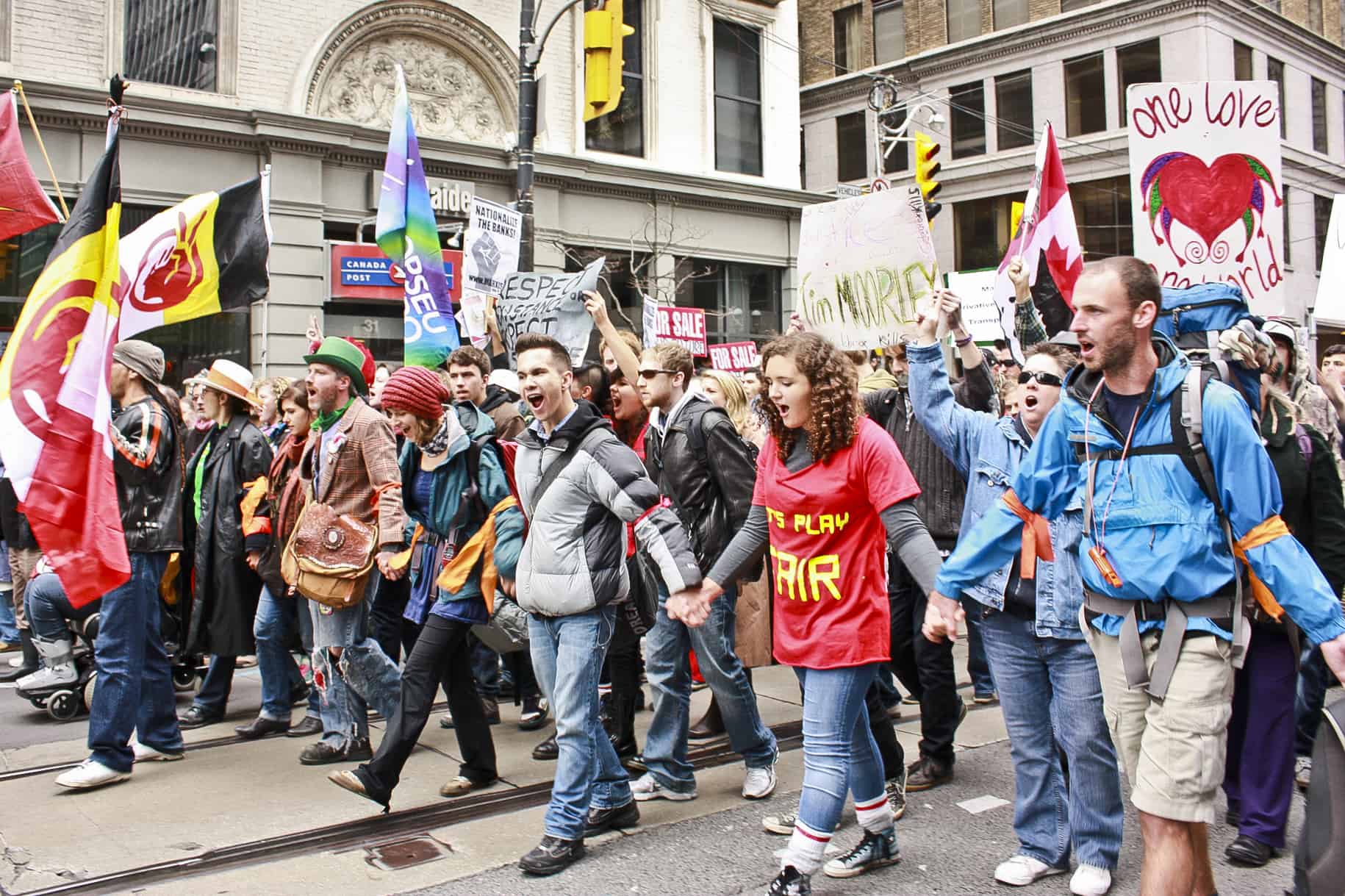Occupy the world! After all, it is ours, is it not? What began with a seed of an idea, planted on the website of Adbusters, a not-for-profit magazine, to occupy Wall Street — “the financial Gomorrah of America” — has grown into a global movement in over 1500 cities. The initial Occupy Wall Street movement took Manhattan on September 17, when protestors set up camp in Zuccotti Park. Just one month later, Toronto and other major Canadian cities joined in solidarity on October 15, and no one is going anywhere anytime soon. As the G20 protestors repeated here in Toronto in June 2010, “this is what democracy looks like.”
The premise of the movement is quite simple. The system is broken, and it needs to be fixed. We, the people, the 99 per cent of society, are united in peacefully occupying the streets to force our governments to pay attention to us and start representing our interests rather than that of the grossly wealthy one per cent. It’s in the mandate of its originator, a magazine “concerned about the erosion of our physical and cultural environments by commercial forces” as stated on their website. It’s in the description on OccupyWallSt.org: a people-powered movement fighting back against the rich one per cent of people who are writing the rules of an unfair global economy that is foreclosing on our future. In a way, we are all to blame, for somehow, we let ourselves be exploited for so long. We couldn’t stop it. The voice of reason has been drowned in dollar signs and greed. Now it’s pouring onto the streets, in cities all over the world, even as authorities continue to try to repress it. Protestors have been beaten and arrested by police in New York, but the people have a right to protest. It’s one of the tenets of democracy, and democracy is precisely what the Occupy movement is asking for.
Occupy Toronto has set up camp in St. James Park with daily meditation sessions, marches, and General Assembly meetings to organize the movement and share ideas. The St. James camp, like others in the Occupy movement, is structured as a demonstration of the equal, collective society that is desired. Everyone helps out, with a communal kitchen receiving daily donations, a library, a media centre, and a live stream broadcasting the events over the Internet minute-by-minute. The movement is receiving a lot of attention from the Canadian mainstream media, and numerous public figures are showing their support — from David Suzuki to Liberal leader Bob Rae. Even Ed Clark, the head of TD Bank group, has spoken in favour of the movement, advising protestors to stick to their guns because “we need people to talk about these problems and how we’re going to solve them.”
Many critics have pointed out a lack of organization of the protest and fault it for lacking clearly defined demands. But the culture of delineated demands for governments to comply with is part of what has created the mess to begin with. If there was an easy answer, presumably someone would have tried it already. This is the ultimate goal of the Occupy movement: to open up a dialogue that seeks to serve the interests of the 99 per cent in creating a better and brighter future. Since the late 1970s, the richest one per cent of Canadians have almost doubled their portion of the national income, while the income of the average Canadian family has not increased at all. Students are graduating with massive debts and dismal job prospects. A lack of strong environmental protection policies is destroying the earth. The Occupy movement exists to motivate our leaders to make a better world. So if you haven’t already, get to St. James Park and express your frustration.


